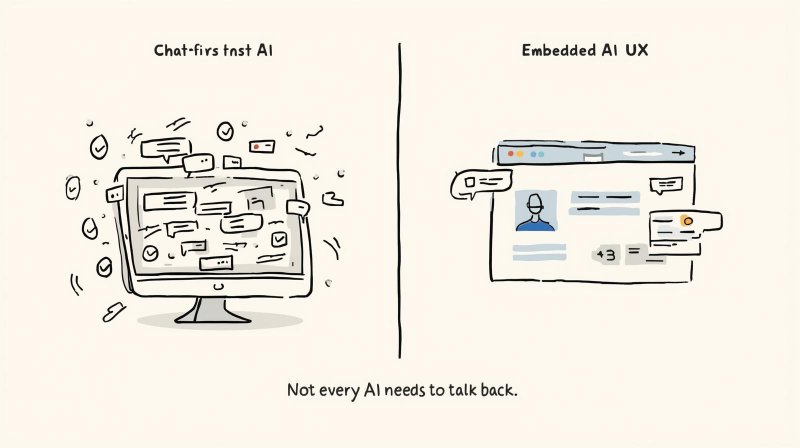Stop Putting a Chatbot in Everything
Updated:
2 minutes

Every week, I see more teams equating “AI-first” with “chat-first.” They’ve seen ChatGPT, Grok, or Microsoft Copilot—and assume that a big, full-screen chat interface is the ultimate way to deliver an AI experience.
It’s not.
Chat interfaces are powerful. They’re flexible, forgiving, and natural for discovery and exploration. But they’re also lazy design defaults when applied everywhere. Most of the time, users don’t want to chat — they want to get something done faster or smarter.
An AI-first product isn’t defined by how it looks. It’s defined by how deeply intelligence is embedded into the workflow. That might mean an invisible model improving ranking or recommendations. It might mean predictive inputs, context-aware shortcuts, or automated background tasks that make the product feel almost anticipatory.
Those are AI experiences too — and arguably the best ones.
The irony is that great AI UX often feels less like talking to an assistant, and more like using a product that just “gets it.” The AI is present, but not performative. You don’t need to see it thinking in a text bubble.
As designer Ma Fisher put it in Why “Chat” Is Holding AI Back:
“You won’t see a chatbot on the homepage. You won’t find a chat bubble in the corner. What you’ll see is something more elemental: speed, relevance, confidence, and clarity. … Not a conversation, but a collaboration. Not answers, but actions.”
That’s the kind of AI experience that moves things forward — one that fades into the background and amplifies the user’s intent rather than demanding their attention.
And as Toptal’s UX team reminds us:
“Many chatbots are nothing more than glorified flowcharts … chatbots fail facing heightened scrutiny because users have been conditioned to expect human-like interactions.”
In other words, chat can be high-maintenance and fragile. When it fails, it fails publicly and painfully.
So yes, chat has its place — when the user’s goal is open-ended exploration, ideation, or synthesis. But when the job-to-be-done is clear and structured, forcing users into a chat flow is friction, not magic.
Let’s stop equating “AI-first” with “chat-first.” AI isn’t here to replace interfaces — it’s here to make them disappear when they should, and work smarter when they shouldn’t. Let’s go back to product-first thinking — where AI is a capability, not a UI pattern. This distinction between AI features and AI capabilities is what separates teams that look innovative from those that build lasting advantage.